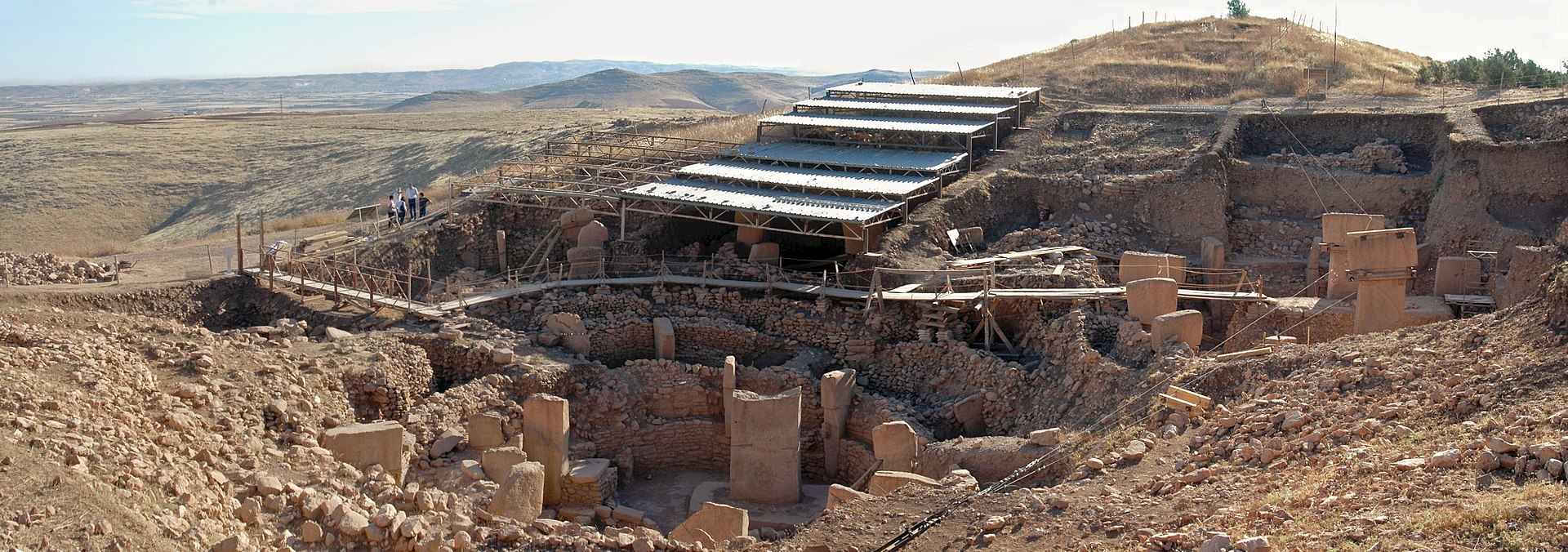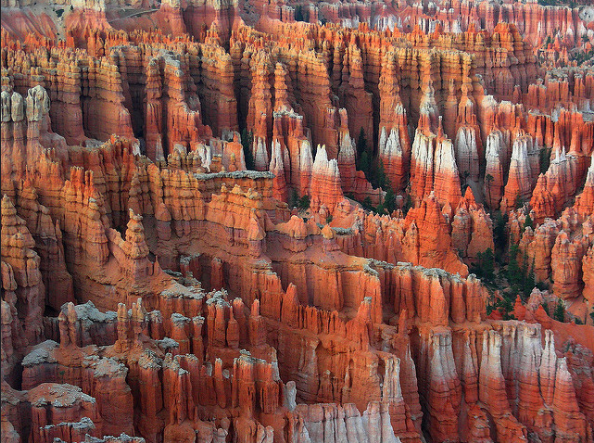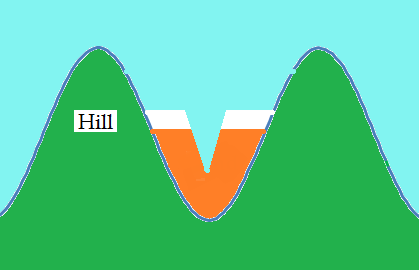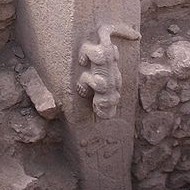
(This image is taken from Wikipedia)
There are several reasons to associate the archaeological site of Gobekli Tepe to the Tower of Babel. The book of Genesis records that after the ark rested at Mt Ararat, our ancestors moved as a group toward a plain and built a city there. Gobekli Tepe is the oldest post-flood civilisation discovered so far and fits the description of Genesis 11.

Imagine that you are required to make a block for construction. Which is easier: To pour wet concrete and let it dry or cut out the block from a bigger rock?
After the flood, the survivors decided, Come, let’s make bricks and bake them thoroughly.
They used brick instead of stone (Genesis 11:3). The word 'brick' in this ancient context did not refer to mud-bricks as we understand bricks now, but included any synthetic block that was made by drying. 'Stone' referred to natural stone. At Gobekli Tepe, there is evidence that people were experimenting to determine the best composition of concrete. John Hurd and Dan Thompson, investigators at Gobekli Tepe, have reported, The mortars across the site vary in colour, granulometry and composition and this may be interpreted in several ways.
They made this decision after the flood. They had observed the wet earth dry up. They witnessed the formation of natural stone.

Hoodoos are formed when a landscape has been eroded. For example, as water flows, it cuts through the land dissolving the rock. After eroding a lot, we can see a cross-section of the land.

In many parts of the world, we can observe limestone on top of sandstone. During the flood, large amounts of sand were deposited on land.
If the surroundings were like a catchment area, not allowing the water to flow out easily, marine life would have remained in the catchment area until the lake dried up. After the lake dried up, all the dead marine animals would become limestone.
G. Friedman (1988) has described a can of sardine found that was left from his previous visit to Bahamas. In just one year, it solidified to hard limestone.

After a limestone plateau is formed, rivers can flow eroding these plateaus by dissolving the rock along its way. When the river dries up, we are able to see a cross-section of the land.

After the ark landed on Mt Ararat, they decided to be together by building the Tower of Babel. At Gobekli-Tepe, the world's oldest post-flood excavated site, archaeologists have discovered animal shaped stone sculptures on flat concrete surfaces.

Which method would have been easier to make the sculpture above?
i) Carve the flat surfaced pillar with the animal from natural rock
ii) Mold concrete when it is wet, and then let it dry
Wet concrete has a natural tendency to form flat surfaces. The Lascaux and Gargas caves at France are examples pre-flood settlements. These caves now lie buried under natural limestone and sculptures on concrete blocks with flat surfaces are not found here.
Researchers investigating Gobekli Tepe have reported:
There are several very significant materials associated with the site, and these include artificial stone (terrazzo) floors in some of the later enclosures and the presence of examples of a “concrete” manufacture within re-used basins left by the extraction of large stones from nearby quarries. While there is no evidence of lime burning technology, there exists the strong possibility of soft marly limestone minerals (Marl is normally in the index 5-15% clays and 85-95% carbonates), in the climatic conditions, contemporary to construction, of marshy ground in the forested plains below. These soft marls when mixed with sands and aggregates would produce a type of concrete on drying, and this may have been the source of the terrazzo floors. Clearly more research is needed into this possibility of the use of concretes at such an early date.
Using concrete is not rocket science, and I don’t understand why they doubt that the ancients could use concrete.
Andrew Curry, a journalist who covers history wrote, From this perch 1,000 feet above the valley, we can see to the horizon in nearly every direction.
(smithsonianmag.com ). The tower of Babel was built so that they do not disperse. So the fact that the horizon is visible from the top of Gobekli-Tepe is not a coincidence. The first command given to man was, Be fruitful and multiply, and fill the earth
(Genesis 1:28).
Today, tall concrete pillars are made with steel bars inside. The ancients may not have known this trick, and this limited the height that they could build. So how to make a tall structure out of bricks?
The 'bricks' (aka 'T' shaped megalith pillars) were supported by filling up the space. Infact Jens Notroff, a researcher at Gobekli tepe, has admitted,the filling material within the enclosures, consisiting of limestone rubble, sculpture and stone tool fragments, and a significant amount of animal bones, speaks in favour of intentional backfilling events.
In that interview, he also said, After about 20 years of excavation and research we start to perceive the site of Göbekli Tepe as a kind of meeting point
.
For it to be a meeting point, it had to be high. So they built the 'tower' as a pyramid, where each subsequent layer had to be smaller supported by its larger base. Since it was not completed, it just looks like a mound today.
If you disagree with the conclusions made here, please google pictures of the pre-flood civilisations which are buried under limestone, such as the Lascaux caves, and compare against the art found here. How did people suddenly discover how to make flat surfaced stone with beautiful sculptures? Why did they choose a plateau where the horizon is visible? Why did they stop building that city? There's really no way to explain everything except by believing what is recorded in Genesis. To understand why radiocarbon dates of Gobekli-Tepe have given dates 10000 years old when the earth is just 6000 years old based on biblical chronology, please read this link.
© Selva Harris
2017, 2018